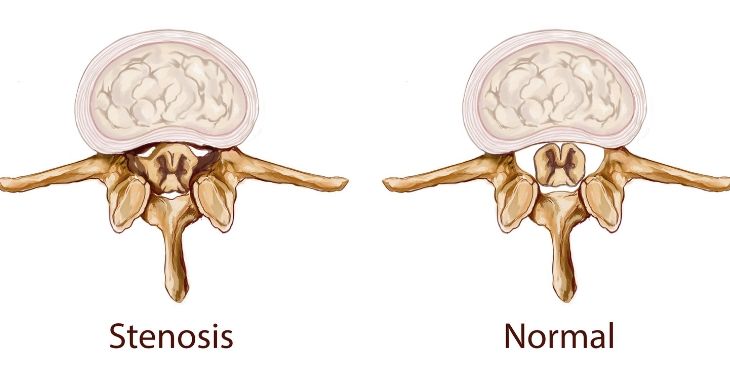What Are the Last Stages of Sciatica?

Sciatica, caused by compression or irritation of the sciatic nerve, brings pain and discomfort that can severely impact daily life. The last stages of sciatica involve a shift in symptoms, offering a chance for recovery and pain relief. Understanding these stages is essential for a full recovery and long-term relief.
Recognizing Symptoms in the Last Stages of Sciatica
As sciatica progresses, its symptoms can change or lessen, marking the transition to its final stages. Early stages of sciatica are often characterized by sharp pain radiating from the lower back down one leg, accompanied by tingling, numbness, or weakness.
However, in the last stages of sciatica, the nature and severity of symptoms can shift as nerve inflammation decreases. Here’s what typically occurs:
- Reduced Pain and Discomfort: One of the most hopeful signs in the last stages of sciatica is the reduction in severe pain. Sharp, shooting pains may become dull or localized to the lower back or hip, indicating that inflammation around the nerve is subsiding.
- Return of Mobility: Increased mobility is a sign that the sciatic nerve’s function is returning to normal. Patients may notice they can perform daily tasks and activities without experiencing the intense, debilitating pain that once limited them.
- Decreased Tingling and Numbness: The “pins and needles” sensations in the affected leg often diminish as nerve healing progresses. Numbness and tingling decrease, a sign that proper nerve function is restoring.
Recovery timelines vary, and not all cases of sciatica resolve completely. However, recognizing these indicators can help patients understand the last stages of sciatica recovery, allowing them to monitor progress effectively.
Key Signs of Sciatica Improving
During the last stages of sciatica, looking for signs of improvement is crucial to gauge whether healing is complete or more interventions are needed. Here are some indicators of recovery to look for:
- Reduction in Pain Episodes and Intensity: As the body heals, the frequency and severity of pain episodes often diminish. Patients in the last stages of recovery typically experience fewer “flare-ups” and less intense pain, a clear sign of improvement.
- Diminished “Electric Shock” Sensations: Sciatica pain is often described as a shooting or electric-shock-like jolt. In the last stages of sciatica, these sensations lessen significantly as inflammation recedes and the sciatic nerve regains normal function.
- Better Sleep Patterns: Sciatica pain commonly disrupts sleep, especially during the night when lying down, which can exacerbate nerve pressure. When patients begin to sleep through the night without pain, it often indicates that their symptoms are improving.
- Return to Regular Activities: One of the most encouraging signs of sciatica improving is the ability to return to routine activities, such as standing, walking, or sitting for longer periods without pain. This increase in stamina and tolerance reflects nerve recovery and overall physical improvement.
Noticing these signs of sciatica improving signals that the last stages of sciatica recovery are underway, and with continued attention, patients can anticipate a positive outcome.
The Last Stages of Sciatica Recovery: Preventing Recurrence
The last stages of sciatica recovery involve both symptom management and preventing future episodes. Here’s how patients can safeguard their progress and prevent recurrence:
Physical Therapy and Exercise
As mobility returns, physical therapy becomes even more essential. Gentle stretching and core-strengthening exercises help reduce stress on the lower back, support the spine, and stabilize muscles that can prevent further injury.
Continued Monitoring and Adjustments
Even in the final stages, monitoring residual symptoms is essential. Chiropractors, physical therapists, and other medical professionals can assist in adjusting ongoing treatments to ensure all signs of nerve compression are resolved, reducing the risks of a recurring episode.
Ergonomic Adjustments
Everyday activities, like prolonged sitting, lifting heavy items, or poor posture, can strain the lower back and increase the risk of sciatica recurrence. Making ergonomic changes, such as using lumbar support when sitting and practicing proper lifting techniques, can provide significant long-term relief.
Lifestyle Changes
Maintaining a healthy weight, avoiding smoking, and engaging in regular physical activity can support a strong back and reduce nerve strain. Weight management, in particular, can relieve pressure on the lower spine, while a balanced, active lifestyle helps build muscle strength, keeping the back and core stable.
Managing Underlying Conditions to Prevent Sciatica Recurrence
Since sciatica can be a symptom of other underlying conditions like herniated discs, spinal stenosis, or degenerative disc disease, addressing these conditions is critical in treating sciatica. By effectively managing the causes of sciatica, patients can prevent a future return of symptoms.
The last stages of sciatica recovery require adopting a lifestyle that promotes long-term spinal health. Developing a routine of regular stretching, strengthening, and mindful body mechanics during daily activities ensures that the healing process is not just temporary.
Sciatica recovery can be slow and requires patience and consistency. However, through proper care and proactive lifestyle adjustments, most individuals can achieve a full recovery and minimize the chance of recurrence.

When to Seek Medical Help in the Last Stages of Sciatica
Although most sciatica cases are resolved with proper care, seeking medical attention during the last stages of sciatica can be important, particularly if symptoms don’t improve. Consulting a doctor is advised if pain persists or worsens, as it may indicate underlying spinal conditions.
Sciatica that involves severe weakness, loss of bowel or bladder control, or numbness in the inner thigh requires immediate attention, as these are signs of cauda equina syndrome, a serious condition requiring urgent intervention.
The information provided on this website, including text, graphics, images, and other materials, is intended solely for informational purposes and should not be used as a substitute for professional medical advice, diagnosis, or treatment.



)